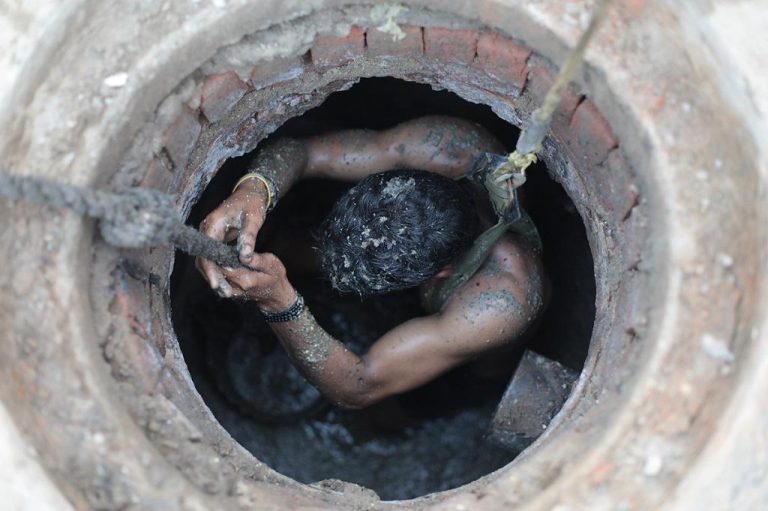Sanitation workers across India continue to lose their lives inside septic tanks. On June 15, four sewage workers, along with three hotel employees, lost their lives after inhaling the toxic gases inside the septic tank at a hotel in the state of Gujarat.
The incident happened around 12.30 am when one sanitation worker went inside the septic tank. After the worker failed to return or respond to his colleagues, his co-workers also went inside the tank for help.
The bodies of the seven workers, most of whom were the sole earners in their families, were later fished out with the help of local emergency service in a three-hour search operation. According to eyewitnesses, the pressure of the gases was so strong that the workers died on the spot.
Following the incident, the owner of the hotel has been charged over the deaths but remains on the run, reports said. The hotel is located some 30 km from Vadodara city in the Fartikui village of Dabhoi town.
Since 2016, more than 420 laborers have lost their lives after cleaning sewage from septic tanks and drainage pipes in the capital city of New Delhi itself. In the first half of 2019, at least 22 workers died inside the sewage tanks.
Manual Scavenging Deaths in India
Manual scavenging or hazardous cleaning of sewer lines or septic tanks is rampant in India despite the inhuman practice being banned under the Prohibition of Employment of Manual Scavengers and their Rehabilitation Act. The workers involved in these jobs mostly belong to the Dalit communities (considered to be untouchables under the regressive caste system in India).
Employed by local administration and private companies on contract, these workers are forced to enter the drainage system without any safety equipment. The Socio-Economic and Caste Census 2011 data of manual scavengers, released by the Ministry of Rural Development in 2015, puts the figures of manual scavengers somewhere around 1,80,657 in the rural areas of the country.
“Neither the Central nor State governments have a database of the deaths of sanitation workers. The number of people dying due to this practice is much higher than what we know,” said activist Bezwada Wilson, convenor of the Safai Karamchari Andolan, a campaign for eradication of manual scavenging.
Several studies and media reports have concluded that at least one manual scavenger dies every five days in India. The estimates of overall deaths over the years being reported in mainstream media remain lower than the numbers posed by several activists, who claim that the data collected on manual scavenging is either outdated or very little.





